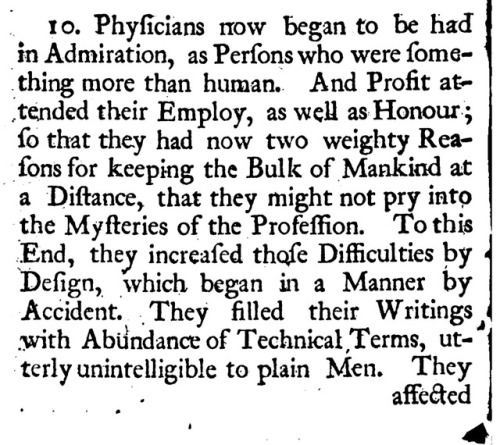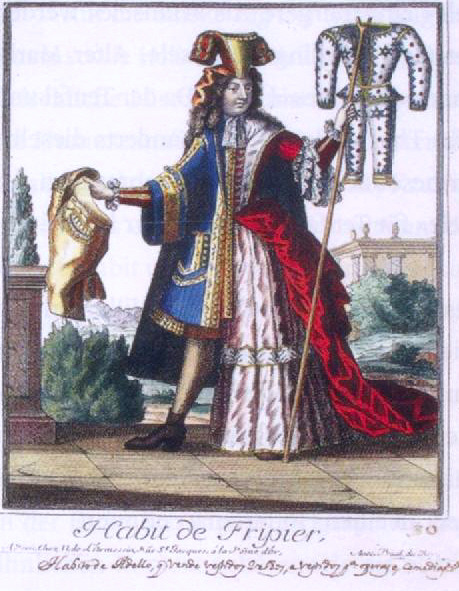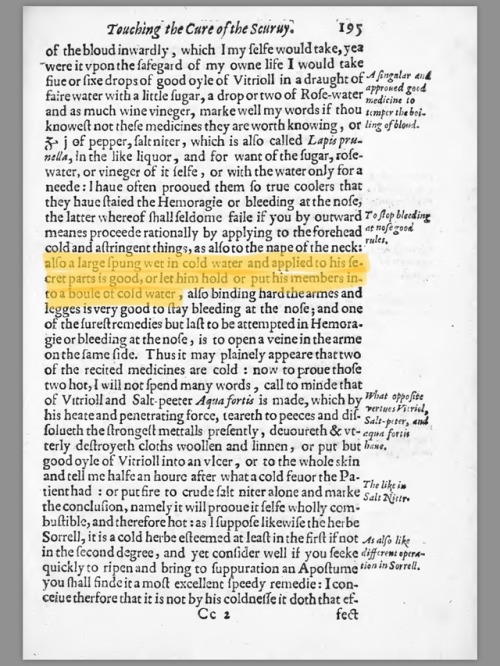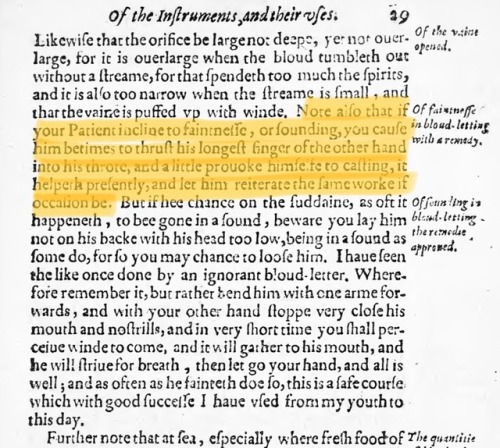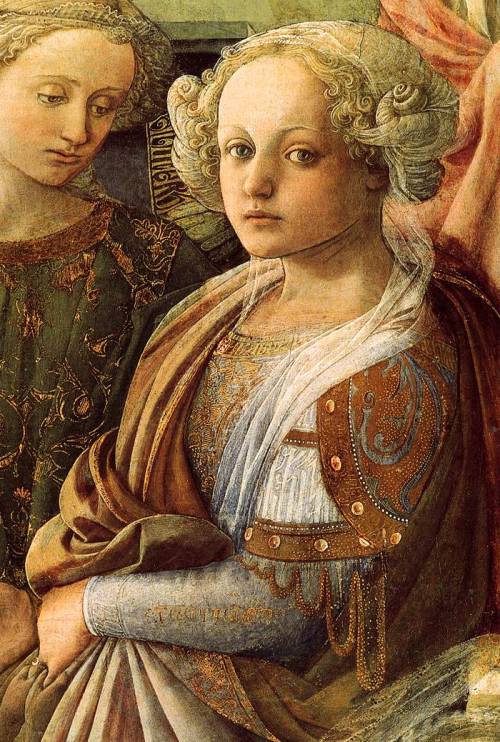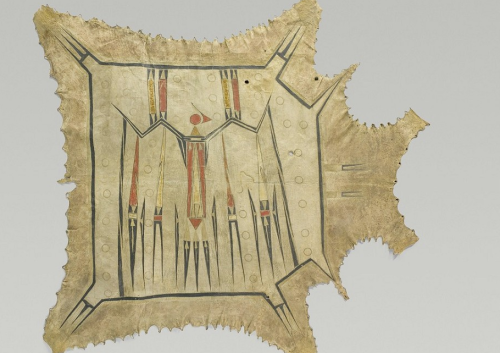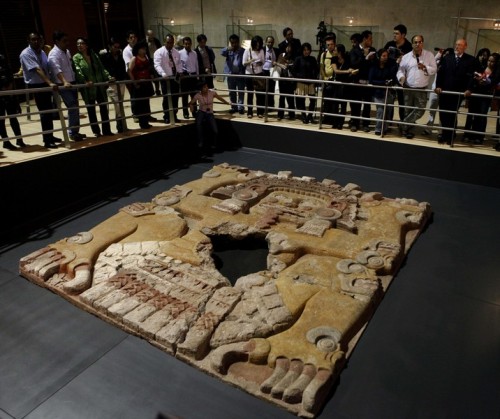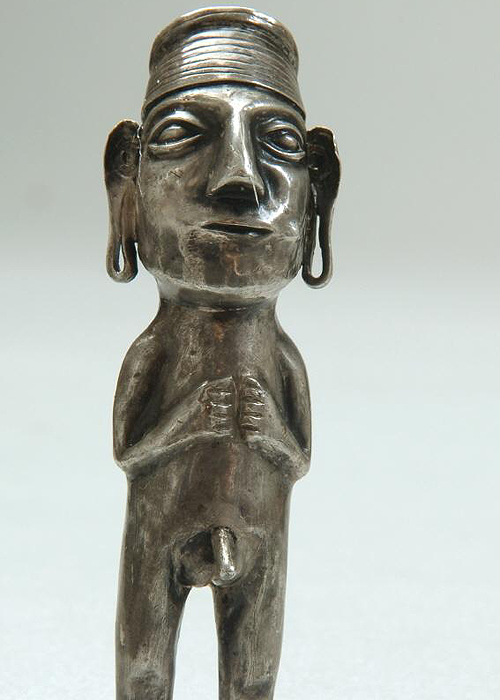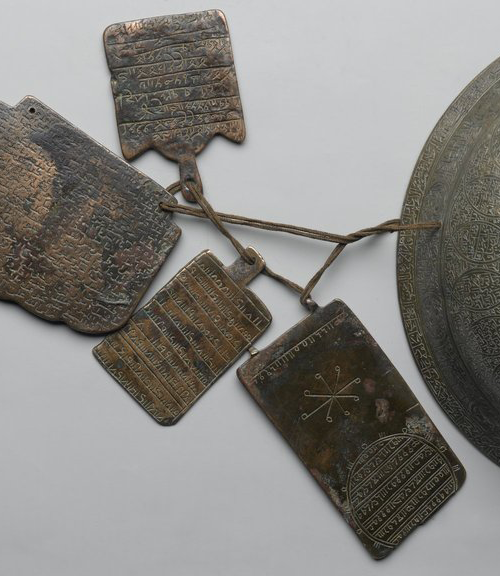#early modern period
A surgeon who wants to keep their patient from passing out during bloodletting should make them stick their middle finger down their throat and vomit.
Oh, and if they do pass out? The surgeon should pinch the patient’s nose and cover their mouth until they startle awake, gasping for air.
Post link
Lynn Wood Mollenauer. Strange Revelations: Magic, Poison, and Sacrilege in Louis XIV’s France, Magic in History. The Pennsylvania State University Press, 2006. Paperback edition. 213 pages.
Shop link in bio.
Silver and gold earflares from the Chimú culture,14th-15th century, Peru.
In ancient Peruvian cultures, precious metals had a special status. As materials, silver and gold were symbols of power and prestige and also held symbolic and religious significance. Objects of silver and gold — such as nose and ear ornaments — were worn exclusively by the elite, and expressed social status and political authority in life and in death when they were placed as offerings in tombs with the deceased. - metmuseum.org (text and photo).
-> I would totally kill for a pair of these :)
Post link
Fra Filippo Lippi, Coronation of the Virgin (detail), 1441-47, Tempera on wood. Galleria degli Uffizi, Florence.
A bit of Renaissance, for a change :) Here’s a work by Botticelli’s master.
This detail is one of my favorite because of its finesse, its delicate colours and very precise drawing. Lippi appears here as a skilled colourist, particularly in the fabrics, with rich golden silks and a beautiful transparent veil interlaced in this young girl’s hair. The character is perfectly drawn, in the typical canon Lippi invented, with a round face over a small pointy chin.
Post link
Painted cervidae skin, 17th century, Illinois, United States.
When this cape is worn in a non traditional way - when the collar of the skin is right of the wearer’s head - the geometrical form of a powerful flying creature can be seen. Eagles, hawks and the spiritual creature “Thunderbird” are very important for Native American cultures. This cape could also be some kind of ritual shroud.
Photo by quaibranly.fr
Post link
Ejagham mask, 20th century, Cross River, Nigeria. Wood, leather, metal and bones.
Mask used to perform warlike dances. Related to ancient customs of headhunting and cannibalism: the captured ennemy was eaten and his head was cleaned and dried to be used as the top of an helmet. Later the head was carved in wood and simply covered with human skin. - quaibranly.fr
Post link
4-meter (13-foot) long carving of Tlaltecuhtli, the Aztec earth goddess, 1502 approx., Templo Mayor, Mexico.
Tlaltecuhtli was one of the most feared deities. She represented life and nurturing, as well as death. Stories recount her insatiable appetite for blood and the large, unearthed carving depicts a stream of blood rushing out of her mouth. To honor the powerful goddess, the Aztecs buried an odd assortment of offerings, including a wolf adorned in turquoise jewelry, underneath the stone slab. Many pieces of the offering hailed from distant lands, such as shells from the ocean. - news.discovery.com
Post link
Bodhisattva Avalokitesvara, details of a painted roll, ca. AD 1500. Mogao caves, Dunhuang, China.
Post link
Wood and tin processional cross, ca. AD 1500, Ethiopia.
In the Ethiopian church, the wooden cross is perceived as having been sanctified by the Christ’s blood, which conferred upon it the infinite power to heal and bless. - metmuseum.org
Post link
Humanoid Inca figurine, silver, 1400-1533, Peru.
The ear lobes of such figurines were stretched by the weight of the large ear ornament worn by the elite. This elite was called Orejones - which means ‘large ears’ - by the Spanish. Some of these figurines display genitals: they were supposed to bring luck to their owner.
Courtesy of the Museo de America, Madrid.
Post link
Vishnu as Vishvarupa (cosmic or universal man), watercolour on paper, Jaipur, India, ca. 1800-1820.
This striking painting shows the blue-skinned Hindu god Vishnu in the form of the Universal Man or Vishvarupa. The small figures painted on his body refer to his role as encompassing all of creation. He has four arms, each holding one of Vishnu’s attributes; a conch shell, a lotus flower, a mace and the circular weapon called Sudarshana chakra (meaning ‘beautiful discus’). - vam.ac.uk
Post link
Chihil Kilid (Forty Keys) Divination Bowl with Inscriptions, Zodiac Signs, and Four Plaquettes, copper alloy (brass), Safavid dynasty, western Iran, 1679.
A brass divination bowl with a raised semi-spherical center. There are tiny inscriptions engraved on the entire surface, both interior and exterior of the bowl. On the interior, the inscriptions in naskhi script appear in round, overlapping medallions. On the exterior, inscriptions also appear in round medallions; however, within a border below the rim, the inscriptions alternate with depictions of the zodiac signs. There is an inscription on the bottom stating the date of the piece 1090 AH/1679 CE and a blessing to the owner (his name is not given). The piece arrived with four inscribed brass plaquettes (two are thought to be pieces of Chinese mirrors, and other two are inscribed in Arabic). - brooklynmuseum.
Post link
Medieval linen bra, ca. 15th century, Lengberg Castle, East Tyrol, Austria.
Up until now there was nothing to indicate the existence of bras with clearly visible cups before the 19th century. Textiles found in a castle in Eastern Tyrol now prove that there already was clothing similar to modern bras in the 15th century – a discovery made by Beatrix Nutz, an archaeologist from the University of Innsbruck.
This “bra” is the one that resembles a modern bra the most. At the first assessment this garment was referred to in German as “Mieder” (= corselette in English) by the excavating archaeologists. It can also be described with the term “longline bra”. The cups are each made from two pieces of linen sewn together vertically. The surrounding fabric of somewhat coarser linen extends down to the bottom of the ribcage with a row of six eyelets on the left side of the body for fastening with a lace. The corresponding row of eyelets is missing. Needle-lace is sewn onto the cups and the fabric above thus decorating the cleavage. In the triangular area between the two cups there might have been additional decoration, maybe another sprang-work. - pasthorizonspr.com
full article : http://www.pasthorizonspr.com/index.php/archives/07/2012/medieval-lingerie-discovered
Post link



